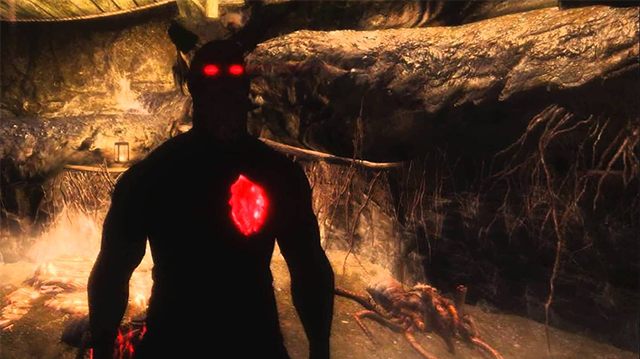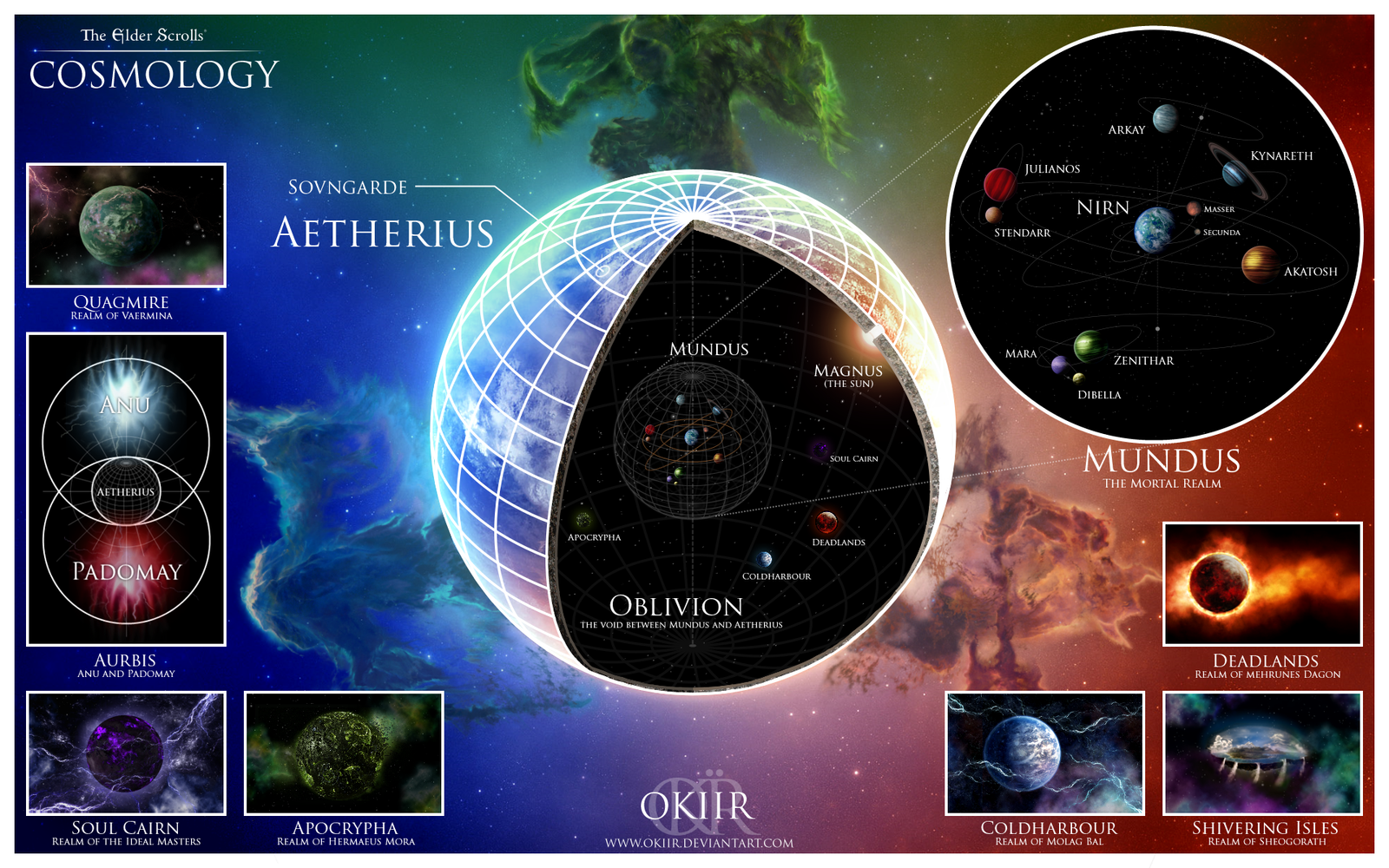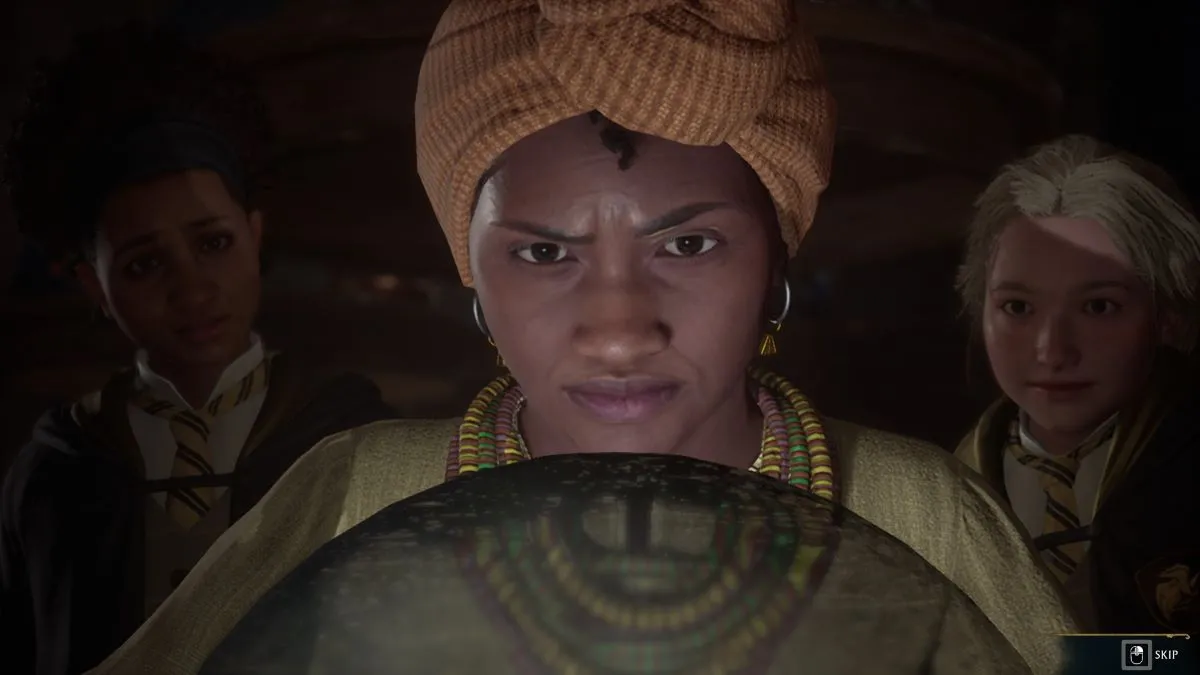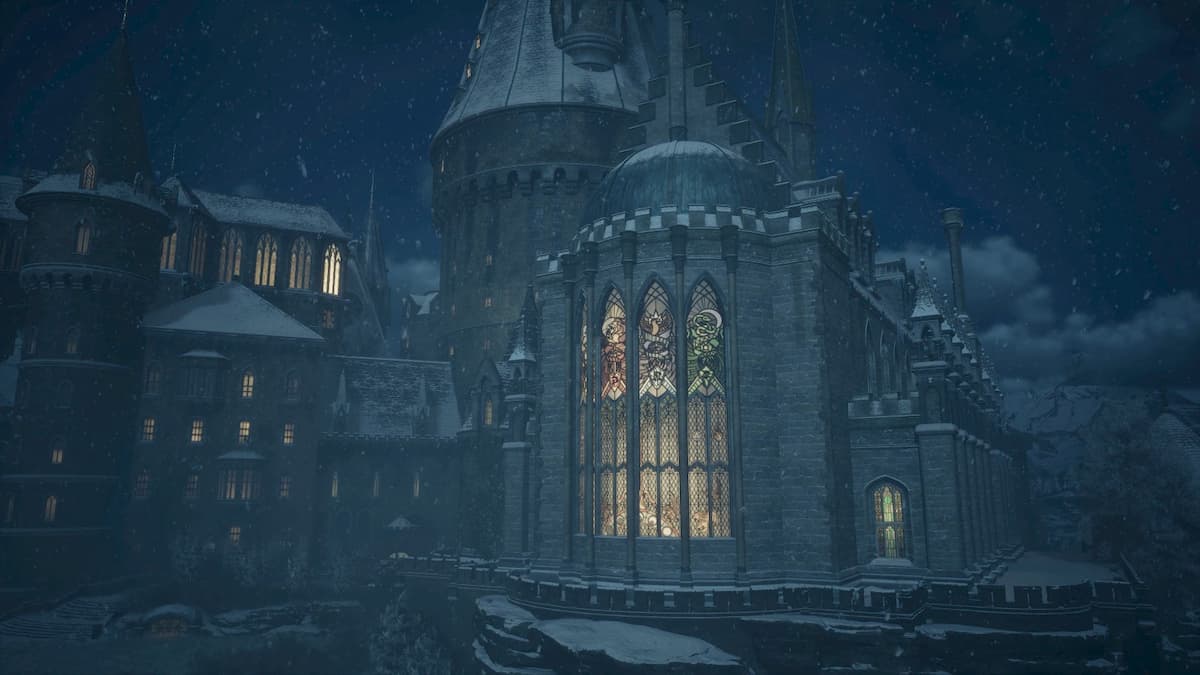Today’s iteration of Sciencing the Shit Out of Video Games is taking a slightly different twist. Normally, I will take a trope in a given video game and through examining physics, astrophysics, biology, or some other science show how the game is completely wrong or right on the money. However, today, I’m taking something that we know is wrong, as far as science is concerned, and attempting to explain the truth behind the legends using science.
We are all anticipating something awesome from Elder Scrolls at E3 — new information about Elder Scrolls Online for sure, and perhaps an Elder Scrolls VI announcement. It could be Black Marsh like some rumors have suggested, but it doesn’t really matter. Elder Scrolls fans are extremely excited about it.
But where did it all start? What is the real story of Anu and Padomay? And what about the Divines — or importantly, what about the planets that the people of Tamriel see in the sky?
Today, I’m going to science the shit out of the cosmology of Elder Scrolls and attempt to explain the truth behind the creation of Nirn and Mundus.
The Legends
Much of the Elder Scrolls legends resemble Greek myths: In the beginning there was order and chaos, Anu and Padomay. From this nothingness was birthed Anui-El, the soul of everything, and Sithis, the Void.
At this point, there is something very interesting to note. Time doesn’t exist. When Anu, Padomay, Anui-El, and Sithis existed, there was no time. Time was not created until Akatosh (or as he was also known, Auri-El). And since time didn’t exist when Akatosh and his Sithis-made counterpart Lorkhan were made, some of the story gets convoluted in time. I have an idea as to why that is, which I will explain in a moment.
Lorkhan convinced the Aedra, who were plentiful at the time and way more than the eight Divines that we hear about in the Elder Scrolls lore, to help him create a kind of playground for them in the universe. They would eventually call this playground Mundus. Many of the Aedra realized that during this creation process their power was being drained, and if depleted enough, they would not be able to leave Mundus.
It’s at this point that Magnus, a chief among the Aedra, fled Mundus — leaving a giant gaping hole in the sky called the Sun. The lesser Aedra who also fled Mundus left their own holes in the sky, which we would call stars.
See the Greek-myth connection now? There is more.

The remaining Aedra wished to punish Lokhan for his deception. They did so by removing his heart and casting it into the sea of Nirn, the planet where the continent of Tamriel sits. And Lorkhan’s body was split in two, becoming the two moons of Nirn: Masser and Secunda.
Then, in a last-ditch effort to save themselves from complete extinction, the eight Divines fled Nirn, but could not wholly leave Mundus, so they created the eight planets to live on outside the influence of men and mer.
Entropy
Some of you will see where I’m going before I explain this, but for those who haven’t heard of entropy, let me explain what is it. A dictionary would define it as the “gradual decline toward disorder.” In science, or more specifically physics, it’s the universe’s inability to convert 100% of energy to a given work. Or perhaps it’s better explained that there is always energy lost with it’s transferred from one object to the next. Of course, the energy isn’t exactly lost, it’s usually just converted to something not useful.

I’ll give you an example using billiard balls. When the cue ball hits another ball, there is always a transfer of energy. We know this because the other ball moves when it’s hit, and if the cue ball hits the other ball straight on, then the cue ball stops moving. However, not 100% of that energy is transferred from the cue ball to the other ball. Most of it is, yes, but some of it is dispersed as sound and back to potential energy to cue ball. This energy loss during transference is an example of entropy. But it happens everywhere and has happened since the beginning of time.
The beginning of our universe’s entropy was the big bang. We have been plummeting toward chaos ever since. The universe is expanding faster than it will ever contract. Mass stretches beyond the visible universe daily. Eventually, in a few hundred thousand years, when we look to the skies we will not see any stars but those in our own galaxy. Even farther out in time, everything will be so far apart from each other it will be as if nothing else ever existed, and even that last star will burn away and the universe will be left with nothing. The ultimate entropy.
Who Padomay and Anu really are
Historically, humans — or in the case of Elder Scrolls, men and mer — have personified forces of the universe. They would apply emotions and critical thinking to things which were just laws of the universe. This is why Padomay and Anu have names and personalities, but in reality, they are the concepts of order and chaos, gravity and entropy.
Some scientists believe that we live in the perfect time in the universe. We can still see the remnants of the big bang, and we can see strong forces of gravity still at work. Perhaps the worlds of Elder Scrolls are in a very similar space. Maybe, like us, they sit in this same balance, but it’s instead called Anu and Padomay. And beings like Lorkhan are just the forces holding things together or pulling them apart. If Nirn, Masser, and Secunda are all part of Lorkhan, maybe they were broken pieces of the planet Nirn, just like it’s been theorized that our moon was once a part of Earth.
Ultimately, science is about testing and proving things wrong. What are you thoughts about the creation of the Elder Scrolls universe? There are conflicting stories, even in the game. Is there science that can tie it all together? Let me know in the comments, and I will see you next week.











Published: Jun 9, 2016 09:52 am